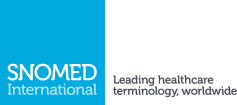Introduction to E-Learning Pathway for Developers
3. Overview

SNOMED CT for Developers has 5 main topics, which cover a total of around 20 hours of learning materials.
Each topic is arranged into sections as follows:
- Introduction (2 hours)
- The Introduction contains an overview of the learning pathway, a background to help you understand how SNOMED CT is used in Electronic Health Records, and a few additional topics to help you get started.
- Sections - Overview, Background, and Getting Started.
- SNOMED CT Essentials (4 hours)
- Specifications (5 hours)
- SNOMED International publishes a variety of technical specifications that can be important to reference during the software development process. It depends on the type of application you're developing as to which specifications you will need to refer to - so it's useful to understand the purpose of each.
- Sections - Release Files, Reference Sets, and Computable Languages.
- Terminology Services (4 hours)
- Terminology Services are services that support the management of the terminology itself. This topic explores the functionality that is typically offered by terminology services, including searching, subsumption, and maintenance. It also considers how terminology services can be implemented using a range of different technologies.
- Sections - Functionality, Relational Databases, REST APIs, and Graph Databases.
- Record Services (5 hours)
- Record Services are services that support the management of healthcare records.This can include functionality such as data entry, record storage, data analysis, and clinical decision support. This topic explores techniques and considerations for designing and developing SNOMED CT enabled record services.
- Sections - User Interface, Storage, Clinical Decision Support, Data Analytics, Migration, and Maintenance.
For more information about each of the topics, please visit the relevant topic page and read the associated section descriptions (displayed by clicking the What is this section about? link).
